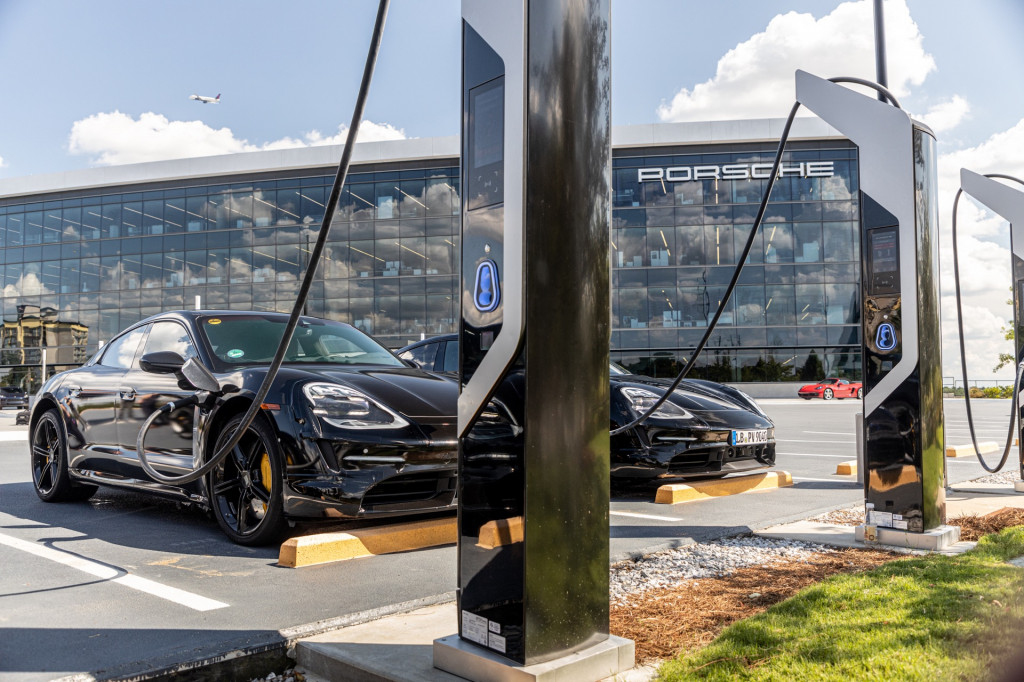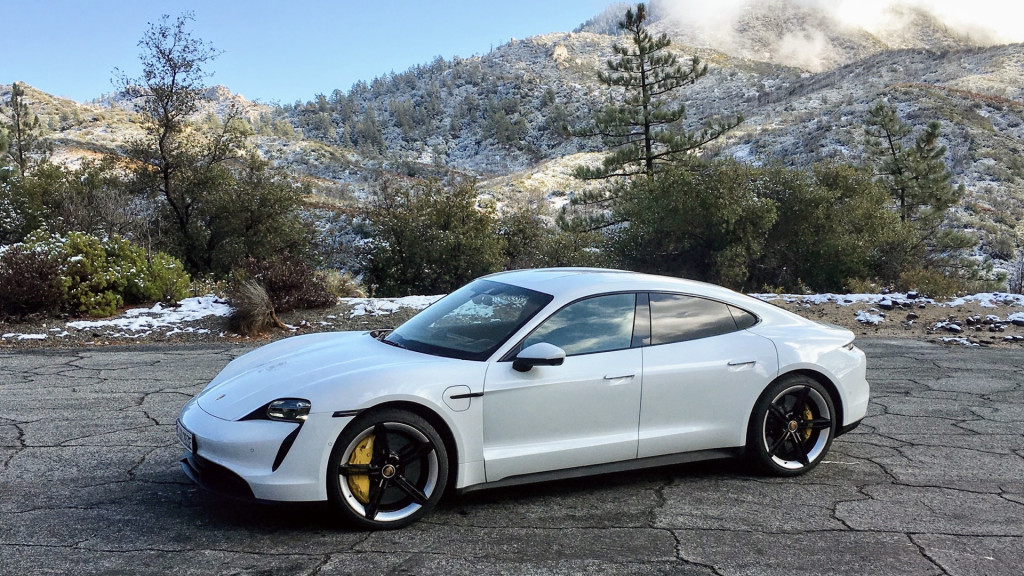For anyone who appreciates electric cars and their potential to transcend existing boundaries, the Porsche Taycan—originally called the Mission E concept—was a rock star from the start.
In concept form in 2015, its propositions included 600 horsepower, 0-62 mph acceleration in 3.5 seconds, torque vectoring all-wheel drive, all-wheel steering, a Nürburgring lap in less than 8 minutes, and a recharge to 80 percent in as little as 15 minutes—all in a vehicle that looked very alluring to those who already had both a Tesla Model S and a Porsche 911 in the garage.

Porsche Mission E Concept - 2015 Frankfurt Auto Show live photos
As it transitioned from concept form to an actual production car, the Taycan didn’t lose much of its sexy shape—which is to the detriment of back seat space (we’re fine with that). The most noteworthy omission (or rework) is the interface. Instead of gesture control and a holographic interface system, the Taycan gets more screens—including one in front of the front passenger, with a lower screen at the center controlling climate functions and even allowing vents to be aimed and configured via touch screen, as in the Tesla Model 3.
For the charging part of that promise, Porsche undertook one of the great (and costly) car-tech challenges of the decade: designing the Taycan around 800-volt battery and power systems that could permit the proposed charge times—without adding weight or cooling hurdles. For Porsche, that involved designing a number of components internally—though the Taycan has been encouragement to suppliers to prove there’s a future in 800V.

2020 Porsche Taycan preview
Provided you have access to the right kind of charging hardware—like one of the newer 350-kw Electrify America chargers or one of Porsche’s proprietary units—and provided you have the battery low enough, the Taycan will indeed catch that lightning-fast charging wave, going from 5 to 80 percent in as little as 22.5 minutes, according to Porsche. Otherwise the Taycan will charge at around 150 kw, which from our experience will give you most of a charge in about a half-hour.
In order to get the Taycan’s launch strong enough (2.6 seconds to 60 mph for the Turbo S) yet consistent enough to be able to pull it off ten or more times (and offer an Autobahn-worthy 161-mph top speed), Porsche also resorted to a unique piece of kit: a two-speed dog-clutch gearbox at the rear motor.
The 800V architecture might have helped the Taycan perform, but its effect on efficiency is debatable. EPA range ratings for most of the Taycan lineup aren’t yet out; but they have been released at just 201 miles for the Taycan Turbo, making it the electric passenger car with the lowest efficiency. On the other hand, just as with the E-Tron, we’ve noted a usable range near 200 miles seemingly regardless of the driving conditions—and a bit more in slow-moving traffic.
Although we didn’t have a Taycan in northern Georgia, where we tested the other two GCR Best Car To Buy contenders on highways and back roads, at least three of our six extended Internet Brands Automotive editors that influence this decision have had meaningful [read at least a couple hours] driving time with the Taycan.

2020 Porsche Taycan 4S first drive - Los Angeles, CA
Collectively, we got one heck of a first-taste ride in the passenger seat of the Taycan Turbo S, launched and cornered with its full potential, then drove the Taycan Turbo on the Autobahn and high-speed motorways in Germany and Denmark, drove the Taycan 4S in LA traffic, California canyon roads, and on snow-packed highways of Arctic Finland—and drifted one on a frozen lake.
In all of those driving experiences, the Taycan was an absolute joy to pilot—the kind of rare driving experience in which after many hours spent driving the Taycan in these various environments we probably had satisfied grins on our faces the entire time. The driving position in the Taycan is low, and as with Porsche’s 911 sports car you feel like you’re riding in the car, not on it as with some larger sedans and crossovers. Ride and steering feel just right for the purpose, although our only wish would be for a firmer brake pedal on light braking (it’s reassuring on harder stops).

2020 Porsche Taycan preview
All of the Taycan models offer all-wheel drive, and all of them get close to the original concept’s 600-hp target. The top Taycan Turbo and Turbo S both offer 616 horsepower in normal driving, while with a 2.5-second boost mode they crank it up to 670 hp for the Turbo or 750 hp for the Turbo S. The Taycan 4S offers 522 hp with the standard 79.2-kwh Performance Battery and 563 hp if you opt for the 93.4-kwh Performance Battery Plus.
It’s the 4S, at a starting price of $111,730 with the 93.4-kwh battery (or just $105,150 with the 79.2-kwh one) that we think is going to carry the bulk of Taycan sales. As such it’s hardly the Tesla Model S rival or alternative that many had sized it up to be. It’s something else entirely—a Porsche and a sports car.
